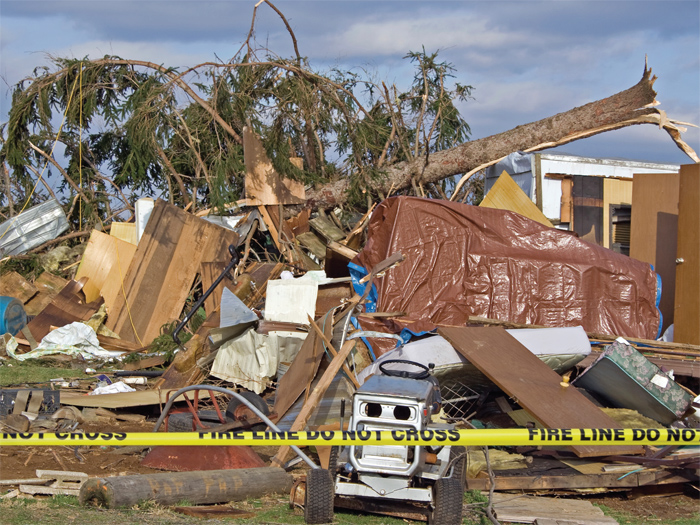Business Resiliency Post COVID-19: How Risk Management Must Up Its Game

If there’s one thing that experts agree on concerning the impact of COVID-19, it’s that things cannot go back to the way they were.
The way businesses interact with suppliers, vendors, employees and customers could change permanently. Standard approaches to risk management no longer suffice. As the worst of the pandemic passes, the world will have to settle into a new normal.
Disagreement arises over just what that new normal will look like.
One of the key challenges for businesses will be recovery of income lost during mandated shutdowns. It’s not yet clear who will pay for those losses, if anyone at all.
Supply chain management is also in the crosshairs. The weaknesses of running lean showed risk managers they will have to rethink how to balance efficiency and exposure to disruption.
The global crisis has also highlighted the limitations of insurance and will force a re-evaluation of how best to minimize and finance risk.
If the insurance industry was already reimagining its role as a service provider more than an underwriter of products, the pandemic will only accelerate that shift.
In all these changes, though, there is something of a silver lining — opportunity for innovation and creativity.
This unique problem may very well give way to solutions that increase the resiliency of businesses, the carriers that insure them, and society as a whole against the next catastrophe.
Bridging a Gaping Business Interruption Gap
The inability to do business thanks to social distancing guidelines and government-ordered lockdowns is the biggest threat to most operations. In some parts of the country, lockdowns are planned to last for as long as three months.
Even with layoffs and other expense-cutting tactics, many businesses won’t survive without revenue.
Their first recourse for recovery: business interruption coverage.

Aaron Parrott, a managing director with Deloitte Consulting LLP
“As we sit here today, different insurance companies are handling it in different ways,” said Wes Robinson, national property president, Risk Placement Services.
“There are those that stand firmly in that the way their policy is written, there is no coverage for business interruption losses related to the pandemic. There are those that are preemptively slapping on virus and contagion exclusionary wording. The industry is making it abundantly clear that going forward, they do not intend to cover this,” he said.
There are, however, several potential policy triggers likely to be debated in court: physical property damage, civil authority action and restricted ingress and egress.
Does coronavirus contamination count as physical damage? Do state-mandated shutdowns of nonessential businesses satisfy the definition of “civil authority” action? How should ingress/egress limitations be interpreted in the context of physical distancing recommendations not enforced by civil authority?
Congress and some state legislatures are also contemplating actions that force insurance companies to pay these claims despite clear exclusionary language.
“These actions raise a lot of serious questions, and there are real Constitutional issues. Is it legal to force a retroactive contractual obligation? Premiums haven’t been paid for this risk and reserves have not been set aside for it,” said Sharon Stuart, chair of the Insurance and Reinsurance Committee of the International Association of Defense Counsel.
The American Property Casualty Insurance Association estimates that losses for small businesses with 100 or fewer employees alone sit at roughly $255 billion to $431 billion per month.
By comparison, the annual premiums for all commercial property risks amounts to just $71 billion per year, or about $6 billion a month.
Clearly, any government order to retroactively cover business interruption claims would cripple the insurance industry, trading one economic problem for another.
The Future of Pandemic Risk Management
Most traditional commercial policies were not built to handle the massive losses of a truly global catastrophe, and COVID-19 has highlighted just how insufficient the usual mechanisms of risk transfer can be in a Black Swan event.
The best way for businesses to build resilience against the next global crisis may be to completely rethink the way they approach risk mitigation and finance.
“Insurance is purchased because people don’t have methods for breaking down and minimizing a risk to a point where they’re comfortable retaining it themselves,” said Zachary Finn, director of the Davey Risk Management & Insurance Program at Butler University in Indianapolis.
“I think we’ll see a shift from Insurtech to Risktech — new technologies that change the way we look at risk. We were already moving in that direction anyway, because it just makes sense.”
“People and skill sets are frequently overlooked assets, and I think going forward we’ll see how creativity and a will to get things done help to drive us forward despite uncertainty.” — Tracy McLean, senior vice president, global logistics insurance, NFP
Companies that better understand their exposures can more effectively self-insure them, whether through a captive or shared risk pools.
This not only reduces reliance on the traditional insurance industry but also gives participants more skin in the game and incentivizes them to take more proactive steps toward risk mitigation.
This strategy won’t make organizations immune to the effects of worldwide disruption but could leave them in a better position to financially absorb the costs and exert more control over claims.
Larger entities could further monetize their risk by selling their own coverage to contractors, suppliers, customers or anyone they do business with.
For example, “you can monetize your supply chain by selling product liability and recall insurance to your suppliers. Most companies are under the default assumption that they’re going to pay the bill in the end anyway, so why not minimize the impact by proactively collecting some premium,” Finn said.
“The same is true for other lines of coverage. McDonald’s franchises don’t buy property or liability insurance from a commercial carrier; they buy it from McDonald’s. It’s a more cost-effective risk management strategy that I think we’ll start to see a lot more organizations use.”
Finn played a part in the recently drafted Amended Terrorism, Pandemic Risk Insurance Act of 2020 (TP-RIA).
If passed, the amendment would retroactively expand coverage under TRIA to include “pandemics, and the associated perils of virus, communicable diseases, quarantines, Government ordered repatriation and border closings.”

Paul Houston, head of risk management, global markets, Allied World
A Federal backstop could prove necessary to maintain economic stability if the private sector is unable to cover its losses.
It should be noted that pandemic insurance products do already exist, but never quite got the attention they deserved until now.
“After Ebola, the requests I had for some sort of pandemic coverage were through the roof. Zero people bought it. One month after the Ebola scare was over, no one asked about it again,” Robinson said.
The same drop-off in interest isn’t likely to occur this time around, and a private pandemic market could very likely spring up to fill in gaps uncovered by a federal backstop, self-insurance and other traditional policies.
Lessons Learned in Supply Chain Management
Restoration of the global supply chain is integral to economic recovery.
Just as COVID-19 threw into stark relief the lack of financial preparedness for extended disruption, it has also highlighted the brittle nature of “just-in-time” production and the dangers of a fragmented, global supply chain.
“In the past, the product life cycle was a lot longer, so you would manufacture something, and it would not go out of style for a year or so. You could have a warehouse full of goods and be confident that you would sell it,” said Paul Houston, head of risk management, global markets, Allied World.
“But now the life cycle is really short. By the time you buy a new phone, it’s out of date. That’s the impetus for just-in-time production. It provides the flexibility to switch gears to match changing consumer demand,” he said.
“At the same time, supply chains have stretched around the globe, because it’s simply less expensive to manufacture in other countries. So, the logistics chain has gotten both longer and tighter. When something snaps, it creates bigger issues than it has in the past.”
Going forward, manufacturers will have to strike a balance between efficiency and resiliency.
“People will realize that maybe four hours’ worth of supplies wasn’t the best idea but aren’t going to switch to a six-month inventory. Companies will have to plan inventories more strategically, stocking up some in some places to support flexibility without eating up too many resources,” said Aaron Parrott, a managing director with Deloitte Consulting LLP.
There may also be a need to have manufacturing become more seasonally adjusted and to build quarantine buffers going into cold and flu season, according to Finn.
The same argument for balance can also be brought to the discussion around consolidation and shortening of supply chains.
Keeping suppliers local may reduce exposure to global disruption, but that comes at a cost.
Rather than pulling supply chains in closer, the better response is to maintain diversification across geographies but build clearer visibility into their lower tiers.
“You may have Tier 2 suppliers in Canada, Mexico and Thailand and think you’re good. However, if they’re all sourcing component parts from the same factory in China, then you haven’t solved your problem,” Houston said.

Tracy McLean, senior vice president, global logistics insurance, NFP
Technology will certainly have a bigger role to play in shoring up the resiliency of supply chains and manufacturers.
Data analytics and machine learning may have greater relevance to manufacturers as tools to help track fluctuating demand and adapt their production and supply orders accordingly.
“I think we’ll see more smart factories that allow manufacturers to adjust production in real time to match variability in demand. They have to be able to scale-up, scale-down, more strategically plan downtime and repair, and change how they make products quickly depending on where the demand is,” Parrott said.
Manufacturers may also adopt customer-facing platforms more widely to foster direct-to-consumer sales, cutting out the middlemen and all their associated exposures.
The Intersection of People and Technology
A third vulnerability brought to light by the pandemic, however, has been an underinvestment in technology across many sectors.
While this shortcoming has certainly slowed the ability of some businesses to adapt, solutions devised on the fly have also showcased a good deal of heretofore unrecognized talent and ingenuity.
“I’m impressed with how, through all these changes, we’re seeing some great innovation within our country on how to flip the switch and look for new opportunities,” said Tracy McLean, senior vice president, global logistics insurance at NFP.
“This situation is changing the way we think about who we want to source our materials from, how we want to operate both internally and externally, and how we incorporate technology into our processes.
“People and skill sets are frequently overlooked assets, and I think going forward we’ll see how creativity and a will to get things done help to drive us forward despite uncertainty.”
Stories of innovation punctuate the otherwise somber news on a daily basis — startups using 3D-printers to make ventilator parts, swab sticks and face shields; new smartphone apps designed to drastically improve contact tracing on a broad scale; industrial drones that disinfect surfaces without the need for boots on the ground.
If there’s a silver lining to crisis, it’s that it breeds creativity. When “normal” gets fuzzy around the edges, it creates more room for innovative people to push boundaries and come up with new solutions.
A challenge remains, though, in getting these solutions to stick when society relaxes out of crisis mode.
“People get scared when they hear about technology, because they fear having their job eliminated. If you’re not designing a solution with the person in mind, their engagement with that solution will be less than stellar, and people could reject it or use it very little,” Parrott said.
“There is a need for a culture shift that’s going to have to be driven from the top. Change management is just as important as the quality of the solutions you come up with.”
Ultimately, people have to understand how a new technology is going to benefit them.
Upskilling workers to engage with a new solution helps to gain buy-in by adding value to their jobs. New tools that automate some processes traditionally requiring close contact also may enhance workplace safety.
Both of these benefits make that workforce less susceptible to extended unemployment should a similar outbreak occur in the future.
“Companies will be held accountable not only for their ability to move products and goods, but [also] to keep their people safe, and that means looking at how we can do more with technology,” NFP’s McLean said.
“The way that companies approach safety will likely be a bigger competitive factor going forward.” &










